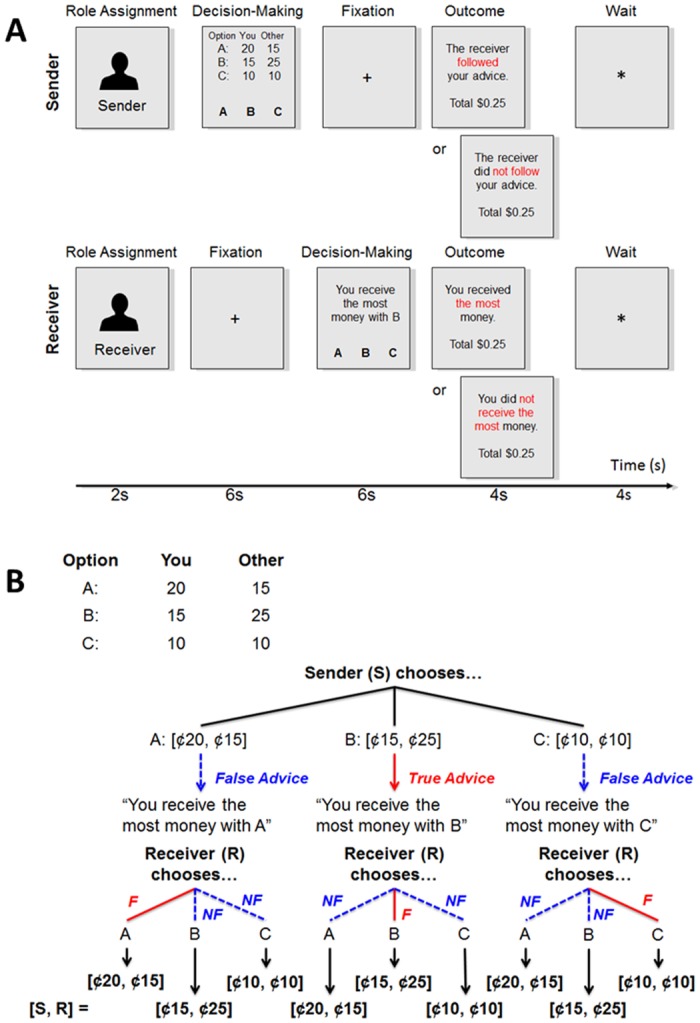Fig 1. Experimental design.

(A) Timeline for a single Communication Game. A subject was assigned to either the Sender or Receiver. The Sender viewed three payment pairs and was instructed to choose true advice (the pair allocating the most money to the Receiver) or false advice (the pairs allocating less money to the Receiver) for the Receiver. In contrast, the Receiver could not view the payment pairs. Instead, the Receiver was instructed to choose one pair based on the Sender’s advice. The Receiver’s choice determined the final allocation of money to each player. Finally, both the Sender and Receiver could view information about whether their partner was trustworthy or trusting. (B) An example of three payment pairs which the Sender might view during a Communication Game trial. In this example, the Sender (S) delivered true advice if she/he chose option B; the Sender delivered false advice if she/he chose options A or C. Then, the Sender’s choice of advice was presented to the Receiver (R), and the Receiver did follow (“F”) or did not follow (“NF”) the advice. The Receiver’s choice determined how much S and R gained.
